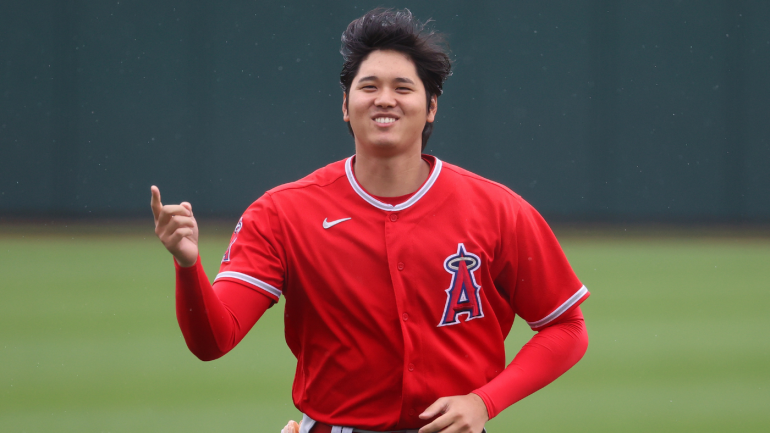
The 2021 Major League Baseball season is upon us. The pandemic necessitated drastic changes to the 2020 season and things will be (mostly) back to normal this year. There will still be seven-inning doubleheaders and an extra-innings tiebreaker rule, but we'll have 162 games and a 10-team postseason. Hopefully we get through the season with no pandemic-related interruptions.
To stick with the "21s" theme, here are 21 bold predictions for the 2021 baseball season ahead of Thursday's Opening Day. Come with me, won't you?
1. There will be a last minute universal DH deal.
Pitchers returning to hitting has already claimed one victim: Zac Gallen. The Diamondbacks ace suffered a stress fracture in his forearm swinging a bat last week and will miss the early part of the regular season. More pitchers will get hurt swinging a bat and running the bases because pitchers get hurt swinging a bat and running the bases every year. It is inevitable.
MLB employed the universal DH last year as a health and safety measure. The shutdown and unusual three-week ramp up period put pitchers at increased risk of injury, so MLB and the MLBPA agreed to the universal DH to lower the injury risk. It was a smart move. Everyone (MLB, the MLBPA, fans, sponsors, etc.) benefits when players stay healthy.
This year though, MLB considers the universal DH an economic issue even though pitchers haven't hit in over a year and have to build back up following the 60-game season. MLB wanted the MLBPA to agree to an expanded postseason (i.e. tens of millions in revenue for owners) in exchange for the universal DH, which is a laughable proposal. The universal DH just isn't that valuable a bargaining chip (it's 15 low-value jobs without any additional roster spots).
Last year MLB and the MLBPA agreed to the expanded postseason minutes -- literally minutes -- before the first pitch on Opening Day. My first bold prediction calls for another last-minute agreement, this time bringing the universal DH back. Just about everyone wants the universal DH. MLB, the MLBPA, front offices, managers, the majority of fans, even commissioner Rob Manfred himself.
One notable pitcher has already gotten hurt swinging a bat this spring and I don't think Manfred wants to be singled out as the guy who is letting it happen when (not if, when) it happens again. The universal DH was the easiest "look, I'm doing what's best for the game!" test for Manfred and he already failed spectacularly. He'll relent at the last minute because it's better late than never.
2. The Athletics will trade for Story.
The question is not will the Rockies trade Trevor Story? It's when will they trade him, and where will they trade him? I guess that's two questions. Anyway, Story is an impending free agent and there's no reason to believe he will sign an extension. Colorado has a history of paying big to keep their own (Todd Helton, Troy Tulowitzki, Nolan Arenado, etc.), but I can't see it with Story.
The Athletics are not the first team that jumps to mind as a potential trade suitor for Story, especially after they spent the offseason cutting payroll, but I am boldly predicting Oakland will nab the star shortstop. I base this bold prediction on three things:
- The A's need a shortstop. With all due respect to Elvis Andrus, they can do a lot better.
- The A's are willing to be bold. Remember the Jon Lester trade? What about the Jeff Samardzija trade?
- The A's will be in the race. Or at least I think they will, and they tend to get help at the deadline when they're in it.
The expectation is Oakland will have some fans in attendance on Opening Day, with capacity increasing into the summer months. More fans equals more revenue, and more revenue equals the ability to add (some) payroll at the deadline. Story will earn $17.5 million in 2021, so he'll still be owed about $6 million at the deadline. That's workable. The two teams can figure that out.
What will the prospect package look like? I'll say the A's build a package around pitching prospect Daulton Jefferies and infield prospect Logan Davidson, with a few lesser pieces thrown in as well. The Manny Machado trade is a reminder that not even stars fetch a big return at the trade deadline. Look for Fightin' Beanes to go for it at the deadline and in a big way with Story.
Dominate your Fantasy Baseball draft with our free Draft Kit, which gives you must-have sleepers, breakouts, busts, and rankings. Plus see the top players at each position, complete with winning projections. Get the Draft Kit in your inbox completely free here.
3. The Blue Jays will trade for Hader.
Few teams upgraded their roster as aggressively as the Blue Jays this offseason. They brought in Marcus Semien and George Springer to improve an already powerful lineup, and made a series of smaller pitching additions in Tyler Chatwood, Steven Matz, David Phelps, and Kirby Yates. They also re-signed Robbie Ray, whose velocity is way up this spring.
Yates, unfortunately, will not pitch this year after blowing out his elbow and undergoing his second career Tommy John surgery last week. Toronto lost its ace closer before Opening Day and will now lean on Chatwood, Phelps, Rafael Dolis, and Jordan Romano in the late innings. It could work! It could also be a total mess and threaten to derail their promising season.
Enter Josh Hader. The Brewers have been listening to offers for their closer for over a year and he's one of the top trade candidates in the sport. I can see a scenario in which Milwaukee trades Hader at the deadline even if they're in the race. Trading him for a godfather package and rolling with Devin Williams and breakout candidate Drew Rasmussen in the late innings is plausible.
Reports indicate the Brewers want MLB-ready or close-to-MLB players in any Hader trade. Would they entertain a one-of-one trade like, say, Hader for Alek Manoah? Or Hader for Simeon Woods Richardson? Or do they need more? Keep in mind Hader will be under team control through 2023, so he's not a rental. He'd be a long-term addition to an up-and-coming Blue Jays team.
Hader is starting to get expensive through arbitration and the small-market Brewers spending north of $10 million on a reliever, a great reliever but still a reliever, does not seem likely. The Blue Jays have the money to spend and a need in the bullpen, and they have top prospects to trade. It's a fit for Toronto and a fit for Milwaukee, so I'm predicting a trade, boldly.
4. The Cardinals will trade for Gallo.
St. Louis has already made one big trade acquisition this year in Nolan Arenado. He's an enormous upgrade at third base and also an enormous upgrade for an offense that scored only 4.14 runs per game last year, seventh fewest in MLB. As good as he is, Arenado alone will not turn the Cardinals into an offensive powerhouse, so room for improvement remains.
I am boldly predicting that improvement will come in the form of Joey Gallo, who has reportedly been on the trade market since last year's deadline. The 27-year-old is under team control through 2022, so he's not a rental, and he'd bring left-handed power to a lineup that is almost completely devoid of it at the moment (switch-hitter Dylan Carlson is their only notably lefty power bat).
The Cardinals made a run at Giancarlo Stanton a few years ago, so they're not afraid of hitters with high strikeout rates as long as they bring huge power to the table, and Gallo certainly does. He's also a sneaky-excellent fielder. This year might be the last chance to win a title with Yadier Molina and Adam Wainwright. Gallo would be a smart, all-in pickup for St. Louis.
As for the Rangers, they are rebuilding, and Gallo is their top trade chip. They could extend him, that's a real possibility, but I'm predicting they trade him. I could see Texas getting cute and targeting Dakota Hudson, who will miss 2021 following Tommy John surgery but will remain under team control through 2024, in a Gallo trade. Hudson and Tyler O'Neill? Dunno, just spitballing.
It's been a while since we had three legitimate blockbusters at the trade deadline, but I am boldly predicting it this year with Story and the Athletics, Hader and the Blue Jays, and now Gallo and the Cardinals. Gallo fills an obvious need for a St. Louis team short on power, and they'd get to keep him next year as well.
5. The Cubs will not trade Bryant.
Enough about who will get traded this season. Now let's talk about who won't get traded: Kris Bryant. The former NL MVP has been on the trade block for two years now, and it's now or never for the Cubs. Bryant will become a free agent after the season and there is no indication an extension is coming, so either they trade him at the deadline or they risk losing him as a free agent.
For this bold prediction, I am going to say the Cubs keep Bryant at the deadline because he's having a bounce-back season, and because Chicago will be atop the NL Central standings come late July. In fact, I'll add a bold sub-prediction to this bold prediction, and say the Cubs add pieces to Bryant at the deadline, and hope to make one last deep postseason run with this core.
This is what will happen: Bryant will remain with the Cubs all year, the Cubs won't win the World Series (more on that later), and they'll make Bryant the qualifying offer after the season. That will entitle them to a draft pick if (when?) he signs with another team. At this point, keeping Bryant all year would surprise me, and that's why keeping him is a bold prediction.
6. Ohtani will go 150/150.
There is nothing I want more from this sport in 2021 than a full, healthy season from Angels two-way wunderkind Shohei Ohtani. He looked marvelous in spring training, both at the plate and on the mound, and if you're not going to be optimistic about a supremely talented player having a huge year in spring training, when can you?
For this bold prediction, I am going with Ohtani joining the 150/150 club this season, and by that I mean 150 strikeouts as a pitcher and 150 total bases as a hitter. Only four players have gone 150/150, none of them remotely recent:
| Player | Team | Strikeouts as pitcher | Total bases as hitter |
|---|---|---|---|
Bob Whitney | 1883 Boston Beaneaters | 345 | 177 |
Dick Burns | 1884 Cincinnati Outlaw Reds | 167 | 160 |
Bob Caruthers | 1886 St. Louis Browns | 166 | 167 |
Dave Foutz | 1886 St. Louis Browns | 283 | 161 |
In 2018, Ohtani posted an 11.0 K/9, a rate that is 100 percent sustainable given his raw stuff and the league-wide increase in strikeouts. Based on that, Ohtani would need about 125 innings to get to 150 strikeouts, so figure 22-23 starts. The Angels intend to use a six-man rotation this year, which will cut into Ohtani's starts, but it will also help keep him healthy (in theory).
Last year was a disaster for Ohtani at the plate, but from 2018-19, he authored .286/.351/.532 batting line with 40 home runs and 378 total bases in 792 plate appearances. Figure he'll need 315 plate appearances or so to get to 150 total bases. Maybe a little more than that because MLB has supposedly deadened the baseball, and Ohtani's offense was boosted by the rocket ball in 2019.
For this bold prediction to become reality, Ohtani has to stay healthy, first and foremost, and he also must rediscover his 2018-19 offense after hitting .190/.291/.366 in 2020. I'm betting it happens. He's young (still only 26), he's further removed Tommy John surgery, and he looks fantastic this spring. A healthy Ohtani is the most fun player in the game and I won't hear otherwise.
7. deGrom will be the hardest throwing starter ever.
I have no idea how he's done it, and it defies the typical pitcher aging curve, but Mets ace and two-time Cy Young winner Jacob deGrom is throwing harder and harder with each passing year. Check out his average fastball velocity over the years:
Last year deGrom averaged -- averaged -- 99.0 mph with his fastball, and topped out at 102.7 mph. In 2016, his fastball averaged 94.2 mph and topped out at 97.4 mph. He's added about 5 mph to his heater in five years. That just doesn't happen. Not with pitchers who will turn 33 during the current season. Pitchers typically lose velocity at this age. Not gain it.
DeGrom attributes his ever-increasing fastball velocity to improved mechanics. It's also worth noting he's had an unconventional development path. He was primarily a shortstop in college and he did not begin pitching full-time until 2010, then he had Tommy John surgery and missed 2011. Relative to most 32-year-olds, deGrom has fewer miles on his arm.
Because of that, my next bold prediction calls for deGrom to become the hardest throwing starter in the pitch tracking era (2008 to present) this season. Here are the highest average fastball velocities among pitchers with enough innings to qualify for the ERA title from 2008-19 (I'm excluding 2020 because 162 games is much different animal than 60 games):
- Noah Syndergaard, 2016 Mets: 98.9 mph
- Yordano Ventura, 2014 Royals: 98.2 mph
- Noah Syndergaard, 2019 Mets: 98.1 mph
- Luis Severino, 2018 Yankees: 97.9 mph
- Luis Severino, 2017 Yankees: 97.7 mph
At age 26 in 2019, Syndergaard was the oldest pitcher among those five seasons. I'm predicting deGrom will average 99 mph (or better!) during his age-33 season in 2020. His average fastball as measured by Statcast was 99.2 mph in spring training and velocity typically peaks in July and August, during the warm summer months. DeGrom becomes the hardest throwing starter ever this year. You heard it here first.
8. Cruz will make home run history.
In all likelihood only three 40-somethings will be on an MLB roster come Opening Day: Nelson Cruz (40), Rich Hill (41), and Albert Pujols (41). Pujols is an all-time great, but Cruz is the better player right now, and this bold prediction calls for him to make home run history in 2021. Specifically, I'm predicting he hits the most homers ever by a player in his 40s.
Here's the single-season home run leaderboard among 40-somethings:
- David Ortiz, 2016 Red Sox: 38 (age 40)
- Darrell Evans, 1987 Tigers: 34 (age 40)
- Raul Ibanez, 2013 Mariners: 29 (age 41)
- Ted Williams, 1960 Red Sox: 29 age (41)
- Barry Bonds, 2007 Giants: 28 (age 42)
Cruz is aging like fine wine. By OPS+, his two best qualified seasons were 2019 and 2020, and he remains an exit velocity monster who hits the ball as hard as anyone in the game. Cruz swatted 41 homers in 2019, the second most ever among players in their age-38 season (Bonds hit 45 in 2003), and 16 homers in 2020, which is a 43-homer pace in a 162-game season.
There is always a risk players this age fall off a cliff -- Alfonso Soriano hit 34 home runs at age 37 and was so bad at age 38 he was released at midseason -- and Cruz has dealt with some nagging injuries the last few years. Calling for a 40-year-old to hit 39-plus home runs is nothing if not bold though, even when the player is as good as Cruz.
9. Three Yankees will hit 40 homers.
I had this bold prediction in mind before Luke Voit went down with a torn meniscus, but I'm going to stick with it because Voit's injury only makes it bolder. Even with Voit hurt, the Yankees have no shortage of power. The only question is health, which I guess makes this a prediction about health more than a prediction about production.
Anyway, only three teams in history have had three 40-homer hitters, and two of them played in Coors Field. The list:
- 1973 Braves: Davey Johnson (43), Darrell Evans (41), Henry Aaron (40)
- 1996 Rockies: Andres Galarraga (47), Vinny Castilla (40), Ellis Burks (40)
- 1997 Rockies: Larry Walker (49), Andres Galarraga (41), Vinny Castilla (40)
I'll go with Aaron Judge and Giancarlo Stanton as two of my 40-homer hitters. Not so bold there. The third? How about Clint Frazier, who finally has a full-time lineup spot? He hit 20 homers in 406 sporadic plate appearances the last two seasons, and he's already posted several exit velocities this spring that are higher than anything he's hit in his regular season career.
MLB is attempting to deaden the baseball, though the early returns suggest it isn't making much of a difference, and besides, the Yankees have hitters who don't need a juiced ball to go deep. Plus Yankee Stadium is very home run friendly, and they'll get to play a lot of games against the Orioles and Red Sox pitching staffs. Three 40-homer hitters in the Bronx this year. It has been foretold.
10. Devers will rack up 60 doubles.
Two years ago Nick Castellanos had the 10th-highest doubles total in a single season in baseball history, and he didn't even lead his league in doubles. He was traded from the Tigers to the Cubs at midseason, so his 58 doubles were split between the American League (37) and National League (21). That's a fun fact for you.
Baseball has not had a 60 doubles hitter in 85 years now -- Todd Helton came close with 59 in 2000 -- and only six players in history have recorded 60 doubles in a season. The list:
- Earl Webb, 1931 Red Sox: 67
- George Burns, 1926 Cleveland: 64
- Joe Medwick, 1936 Cardinals: 64
- Hank Greenberg, 1934 Tigers: 63
- Paul Waner, 1932 Pirates: 62
- Charlie Gehringer, 1936 Tigers: 60
There have been more 60-homer seasons (eight) than 60-double seasons (six) in baseball history. This year, I'm boldly predicting Red Sox third baseman Rafael Devers joins that exclusive 60 doubles club. Devers wasn't too far off two years ago, when he hit an American League-leading 54 doubles in 2019. I'm expecting him to get to 60 this year.
Devers has two things working for him. One, his plate coverage is unreal. He has the unique ability to get the fat part of the bat on the ball no matter where it's pitched, and he's an elite exit velocity guy. Among the 95 batters with 500 balls in play the last two years, only Matt Chapman (92.9 mph) and Jorge Soler (92.6 mph) had a higher average exit velocity than Devers (92.5 mph).
And two, Devers plays his home games in Fenway Park, an extreme doubles park thanks to the Green Monster in left field and the short wall in right. Over the last five seasons there were 12 percent more doubles at Fenway than any other non-Coors Field park. Devers hits the ball hard, he plays his home games at Fenway, and he's a lefty hitter who is at the platoon advantage more often than not. All that equals a 60 doubles bold prediction.
11. The Rays will average fewer than 3.5 innings per start.
Originally, I was planning to predict Rays relievers would throw more innings than Rays starters this year, but it turns out they already did that in 2018 (and 2020, though that was a 60-game season). It's true. The opener went mainstream in 2018 and Tampa's starters threw only 624 innings that year. Their relievers threw 824 1/3 innings. Yeesh.
Because of that, I'm going to call an audible, and instead boldly predict Rays starters will average fewer than 3.5 innings per start in 2021. Here are the lowest innings per start rates in history not counting 2020, which was a short and bizarre season that had teams doing all sorts of weird stuff with their pitching:
- 2018 Rays: 3.85
- 2019 Angels: 4.20
- 2019 Rays: 4.34
- 2019 Blue Jays: 4.39
- 2019 Mariners: 4.60
Conditions are ripe for the Rays to duck under the 3.5 innings per start threshold in 2021. They're going to building everyone back up carefully following the short season, they employ the opener frequently and keep their starters on a short leash anyway, and their starters simply aren't built to pitch deep into games at this point. Not with Charlie Morton and Blake Snell gone.
Behind ace Tyler Glasnow, who himself hasn't thrown more than 86 innings in a season since 2018, the Rays will rely on Ryan Yarbrough (often paired with an opener), Chris Archer (coming off thoracic outlet syndrome surgery), Rich Hill (hasn't thrown more than 65 innings since 2018), and Michael Wacha (fewer than 100 innings twice in the last three years). Brendan McKay is coming off shoulder surgery and prospect Shane McClanahan will have his workload monitored as well.
Tampa's pitching staff is not designed to eat innings. They're going to limit guys to two turns through the lineup, maybe even less than that in some cases, and throw about five relievers at you a night. With the exception of Glasnow, the Rays are built to get 3-4 innings from their pitchers at a time, and no more. All that points to fewer than 3.5 innings per start in 2021.
12. Allen will be Cleveland's next breakout pitcher.
No team in baseball develops pitching as well as Cleveland. The latest success story is Shane Bieber, who went from fourth-round draft pick to Cy Young winner in five years. They also have a third- (Aaron Civale) and 12th-round (Zach Plesac) draft pick in the rotation, and in recent years the club has helped Mike Clevinger and Corey Kluber go from unheralded trade pickup to ace starter.
Cleveland's next breakout pitcher: Logan Allen. I am boldly predicting it. Cleveland acquired the lefty in the three-team Trevor Bauer/Yasiel Puig trade with the Padres and Reds, and he's impressed this spring after spending most of last season at the alternate site. Allen's velocity has been up to 97 mph and his slider is sharper as well. He's struck out 18 and allowed one run in 14 spring innings.
Allen, 23, shed 35 pounds over the winter and he fully bought into the team's pitching program. MLB.com's Mandy Bell has more:
So, how exactly did he put himself in this position? Aside from his diet that allowed him to enter camp in great shape, Allen said that the Indians suggested some tweaks based on physical movements and analytics when they were breaking down his mechanics. He started working at the Indians' alternate training site last season and continued all through the offseason. Not only did he quickly pick up on how to better his delivery, he's mastered how to repeat it.
Cleveland has not had a left-handed pitcher make a start since Ryan Merritt in August 2017, if you can believe that, and Allen will surely end the no-lefty streak this year. He's poised to do more than be a token southpaw though. Allen's stuff is better than ever, and he's refined his delivery and improved his control. Simply put, he looks like a breakout Cleveland pitcher now.
The bold prediction is Allen throws over 120 innings with a sub-3.50 ERA and more than a strikeout per inning in 2021. As always, Cleveland is loaded is pitching, though the team will have to monitor workloads and build everyone up carefully after last season. That will create a need for innings. The bet here is once Allen gets his foot in the door, he's in the rotation for good.
13. Another Rockie will in the NL batting title.
Perhaps this isn't bold? After all, the Rockies have had 11 batting title winners in their 29 years of existence. More than one out of every three National League batting champs has played for Colorado over the last three decades. The thin mountain air and large Coors Field outfield is conducive to base hits, hence all the batting champs.
Predicting a Rockie to win the batting title is kind of cheating, but I'm going to do it anyway. The player: Raimel Tapia. The 27-year-old put up a .321 batting average in 206 plate appearances last year (he hit .275 in 447 plate appearances in 2019) and he has three things going for him that point to a potential batting title:
- Playing time. Tapia is locked in as Colorado's everyday left fielder (and leadoff hitter)
- Contact skills. His 8.3 percent swing-and-miss rate was quite a bit better than the 11.3 percent league average in 2020.
- Coors Field. Hey, it helps.
Tapia has no power -- he slugged only .402 despite that .321 batting average last year -- but that's not his game. He puts the bat on the ball frequently and he runs very well, with a sprint speed that Statcast has in the top 18 percent of baseball. Tapia will leg out infield singles and also get a lot of bloop hits thanks to Coors Field. Meet the next National League batting champ.
14. Vanderbilt will make draft history.
Never before in MLB draft history have two teammates been selected with the No. 1 and No. 2 overall picks. On only two occasions were teammates selected within the top three picks.
| 1978 MLB draft | 2001 MLB draft |
|---|---|
1. 3B Bob Horner, Braves (Arizona State) | 1. RHP Gerrit Cole, Pirates (UCLA) |
2. 1B Lloyd Moseby, Blue Jays (Oakland HS) | 2. LHP Danny Hultzen, Mariners (Virginia) |
3. OF Hubie Brooks, Mets (Arizona State) | 3. RHP Trevor Bauer, Diamondbacks (UCLA) |
For my latest bold prediction, I'm going with Vanderbilt making draft history, and producing the first two selections in the 2021 MLB draft. The players: Jack Leiter and Kumar Rocker, both right-handed pitchers. Last month our R.J. Anderson ranked Leiter and Rocker the No. 1 and No. 4 prospects in the draft class, respectively. Their numbers this spring are insane:
| IP | H | R | ER | BB | K | ERA | Opp. AVG | |
|---|---|---|---|---|---|---|---|---|
Leiter | 36 | 7 | 2 | 1 | 13 | 59 | 0.25 | .074 |
Rocker | 37 | 16 | 5 | 3 | 12 | 53 | 0.73 | .129 |
Two years ago Rocker pitched maybe the greatest game in college baseball history, a 19-strikeout no-hitter with Vanderbilt's season on the line. Already this spring Leiter has thrown one no-hitter and thrown seven no-hit innings in another game. Vanderbilt is a pitching powerhouse and these two are poised to follow in the footsteps of Walker Buehler, Sonny Gray, Mike Minor, David Price, and many others.
The Pirates and Rangers hold the first two picks this year and my guess is Pittsburgh will take one of the Vanderbilt righties, and Texas will take whichever one is still on the board. My guess is Rocker will go No. 1 overall, though Leiter going No. 1 would be in no way surprising or unjustifiable. Either way, they'll make history and become the first teammates selected with the first two picks.
15. Abrams will take over as the No. 1 prospect in baseball.
The Padres traded for Yu Darvish, Joe Musgrove, and Blake Snell this offseason, and they still have two consensus top-10 prospects in lefty MacKenzie Gore and shortstop C.J. Abrams. That is some impressive wheeling and dealing by GM A.J. Preller. As a reward, I am boldly predicting Abrams will be the No. 1 prospect in baseball come the end of the 2021 season.
Our R.J. Anderson ranked Abrams the No. 8 prospect in baseball earlier this month. Here's his scouting report:
Abrams is one of the fastest players in organized baseball. That could come in handy on defense if he's forced to move away from shortstop, perhaps to center. It also comes in handy on offense, but Abrams is more than a Billy Hamilton facsimile. He has a good feel for contact and above-average power potential thanks to a projectable frame. There's real star-level potential here, depending on how Abrams matures over the coming years.
Abrams, 20, was the No. 6 pick in the 2019 draft, and he spent last year wowing at San Diego's alternate site. That's after hitting .393/.436/.637 with nearly as many walks (11) as strikeouts (14) in 34 rookie ball games during his pro debut in 2019. You're not going to find anyone who doesn't rave about Abrams. He's a WOW player.
Based on R.J.'s rankings, the No. 1 (Wander Franco), No. 2 (Adley Rutschman), No. 3 (Jarred Kelenic), No. 5 (Sixto Sanchez), No. 6 (Ian Anderson), No. 9 (Cristian Pache), No. 10 (Ke'Bryan Hayes), No. 11 (Dylan Carlson), and No. 12 (Casey Mize) prospects should graduate to MLB this year. That ostensibly leaves No. 4 (Julio Rodriguez) and No. 7 (Gore) as Abrams' top competition for the No. 1 spot, along with the two Vandy kids who I boldly predicted will go 1-2 in the draft.
Bottom line, Abrams is incredibly talented and I think he's going to hit the ground running wherever the Padres send him this year (I assume he's going to Single-A to start). The tools are No. 1 prospect worthy and I expect the production to be there. Say hello to baseball's next No. 1 prospect, as if the Padres didn't have enough high-end talent.
16. A White Sox player will win AL Rookie of the Year.
Andrew Vaughn? Good candidate, but no. Nick Madrigal? Also a good candidate, but no. For this bold prediction, I am going with White Sox lefty Garrett Crochet as the AL Rookie of the Year. Crochet, 21, made his MLB debut last season, just a few weeks after being selected with the No. 11 pick in the 2020 draft, and he was dynamite. Eight strikeouts, no walks, no runs in five innings.
Here's a very fun 2020 leaderboard. Can you guess what it is?
- Brusdar Graterol, Dodgers: 54
- Garrett Crochet, White Sox: 45
- Josh Staumont, Royals: 36
- Jacob deGrom, Mets: 33
- Aroldis Chapman, Yankees: 23
Give up? That is the number of fastballs at 100 mph or better. Crochet did not make his season debut until Sept. 18 -- he threw only 72 fastballs total! -- and he still finished second on that leaderboard. Crazy. Had the season been extended another week, Crochet probably would have jumped over Graterol. Pretty wild. Crochet's arm is electric.
The White Sox will use Crochet out of the bullpen again this year and he won't get saves because of Liam Hendriks, and normally a non-closer reliever would have no chance at Rookie of the Year. Times are changing though, and last year Devin Williams became the first pitcher to win the award despite zero starts and zero saves. I'm boldly predicting Crochet will do that this year.
17. The Pirates will have the worst record since the 2003 Tigers.
Folks, the Pirates are going to be bad this year. Really, really bad. SportsLine projects them as a 59-win team, and PECOTA and FanGraphs are only slightly more optimistic at 61 wins and 66 wins, respectively. When the most optimistic projection is 96 losses, yeah, you're bad. It will be a long season along the Allegheny River.
And here's the thing about that: I think the Pirates are more likely to underperform the projections than overperform them, because GM Ben Cherington is going to continue tearing down the roster at the deadline. Tyler Anderson, Kyle Crick, Adam Frazier, Chad Kuhl, Colin Moran, Richard Rodriguez, and several others could be on the way out.
Here are the worst records of the Expansion Era (1961 to present):
- 1962 Mets: 40-120 (.250)
- 2003 Tigers: 43-119 (.265)
- 2018 Orioles: 47-115 (.290)
- 2019 Tigers: 47-114 (.292)
- 1961 Phillies: 47-107 (.305)
This bold prediction calls for the 2021 Pirates to have baseball's worst record since the 2003 Tigers, and because the 2018 Orioles lost 115 games, that means I'm predicting them to lose at least 116 games but not more than 118 games. Narrow window! But that's what makes this a bold prediction, I suppose.
I don't want this all to be negative, so let me remind Pirates fans that although the 2003 Tigers were the worst team many of us have seen in our lifetimes, Detroit did go to the World Series in 2006. Things can turn around quickly.
18. The Giants will use a different Opening Day left fielder.
Let's get a little weird with this bold prediction. Did you know the Giants have used 13 different Opening Day left fielders in the last 13 years? The last player to start consecutive Opening Days for the Giants is (who else?) Barry Bonds. This bold prediction calls for the Giants to use yet another new Opening Day left fielder in 2021.
Here are San Francisco's Opening Day left fielders from 2008-20: Dave Roberts, Fred Lewis, Mark DeRosa, Pat Burrell, Aubrey Huff, Andres Torres, Mike Morse, Nori Aoki, Angel Pagan, Jarrett Parker, Hunter Pence, Connor Joe, and Alex Dickerson. Including Bonds in 2007, that's 14 different Opening Day left fielders in the last 14 years.
Dickerson remains with the Giants and he is expected to be their regular cleanup hitter this season after hitting .298/.371/.576 with 10 home runs in 52 games a year ago. The thing is, Dickerson doesn't play against lefties, and the Giants will see the Mariners and lefty Marco Gonzales on Opening Day. Expect to see Darin Ruf (or maybe Austin Slater) in left field that day.
Ruf (or Slater) would be San Francisco's 15th different Opening Day left fielder in the last 15 years and yes, that's the longest active streak of one team using a different player at a specific position on Opening Day. It is not the such longest streak in history though. The Orioles managed to use 26 different Opening Day left fielders in 26 years from 1933-58.
19. Verlander will return as a reliever.
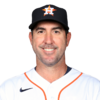
Astros ace and future Hall of Famer Justin Verlander made one start last season before going down with an elbow injury that eventually required Tommy John surgery. Verlander had surgery on Sept. 30 and the typical 14-16 month recovery puts him on track to miss the entire 2021 season, and be ready to go for spring training 2022 (he will be a free agent this offseason).
For this bold prediction, I am saying Verlander will return to the Astros late this season, but as a reliever. It will be impossible to get stretched out enough to start, so it's not even worth trying. One-inning stints out of the bullpen though? Yeah, that's doable. Case in point: Noah Syndergaard. He was throwing high intensity bullpen sessions about 10 months after his Tommy John surgery.
The Astros figure to be in the postseason race this year, at the very least as a wild card team, and a guy like Verlander can help any team, even as a reliever who has to be handled carefully because he'll still be in rehab mode to some extent. Maybe he can only pitch every other day, or once every three days, but the days he does pitch, he can make an impact one inning at a time.
Verlander's already accomplished everything a pitcher could hope to accomplish in this sport. Would he rather be away from the team going through the rehab process, or be on the roster and contributing, even if it's not the safest thing for his new elbow? Of course it's the latter. Expect Verlander to push for a September return, and I'm predicting the Astros let him come back as a reliever.
20. The Dodgers will repeat as World Series champs.
MLB has not had a repeat champion since the Yankees won three World Series in a row from 1998-2000. Heck, MLB hasn't had a defending champion reach the World Series the next season since the 2008-09 Phillies. Repeating is very hard. Just getting back to the World Series is difficult. Success in this game can be fleeting.
The Dodgers, moreso than any recent World Series winner, are in good position to win back-to-back titles. Their roster is so deep it's almost obnoxious, and they added the reigning NL Cy Young winner to a rotation that was already championship-caliber. Most teams would love to have one of Tony Gonsolin or Dustin May. The Dodgers have room for only one their Opening Day rotation.
Squint your eyes and you can how things can go wrong for the Dodgers. Justin Turner and Clayton Kershaw get old fast, Cody Bellinger loses his swing again, Matt Beaty and Gavin Lux struggle to replace Enrique Hernandez and Joc Pederson, injuries, the Padres go bonkers, so on and so forth. It doesn't take much to derail a potential championship season.
And that's what makes predicting a repeat winner bold. Repeating is really hard to do, and if you asked me to pick one team or the field, I'd almost always take the field. This is one of the few times I will take that one team though. The Dodgers are excellent, the core is (mostly) in its prime, and now the World Series monkey is off their back. That's a dangerous combination.
21. MLB and the MLBPA will avoid a work stoppage.
Quite possibly the boldest prediction of the year. Distrust between MLB and the MLBPA is greater than it's been at any point since the 1994-95 work stoppage -- I'm not sure you could get the two sides to agree Tuesday comes after Monday at this point -- largely because the union is upset over free agency, service-time manipulation, and a lack of competitiveness.
The current collective bargaining agreement expires Dec. 1 and typically MLB and the MLBPA open negotiations a year in advance. Recent reports indicate the two sides have not yet had any official bargaining sessions, however, partly because they're still working through pandemic-related issues. The situation is constantly changing and requires around-the-clock attention.
At some point soon MLB and the MLBPA will get serious about the next CBA and I'm going to boldly predict that despite all the acrimony, the two sides will hammer out a deal and avoid a work stoppage. Both sides lost money made less than expected in 2020 and will again in 2021, and they don't want that again. Shutting the sport down so soon after last year would be bad, bad news.
To be clear, this does not mean CBA talks with be painless. There will be leaks and public jabs through the media, similar to what we saw last year when MLB and the MLBPA were negotiating a return-to-play plan. In the end though, there is too much money on the line to shut the sport down again. Bet on a new CBA by Dec. 1. I know it seems unlikely, but that's what makes this bold.
Bagikan Berita Ini
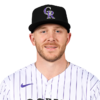





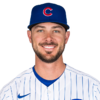





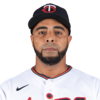

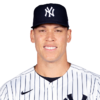

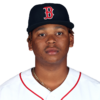



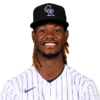
















0 Response to "21 MLB bold predictions for 2021 season: Several big trades, a repeat champ, huge year for Ohtani and more - CBS Sports"
Post a Comment